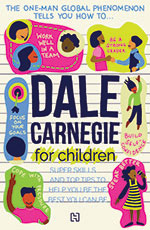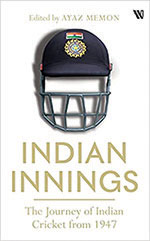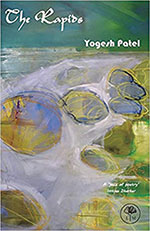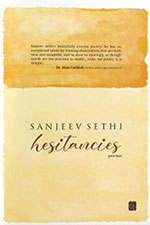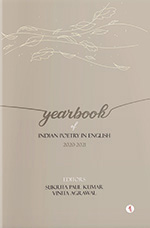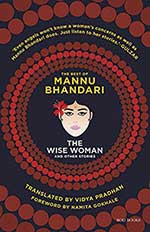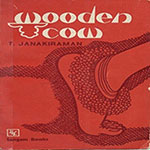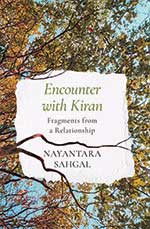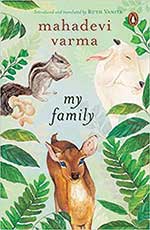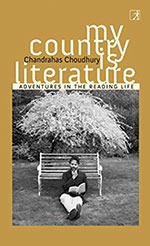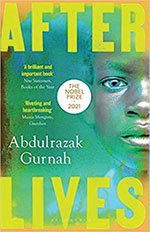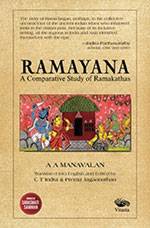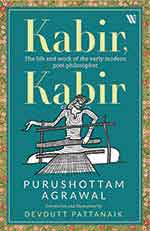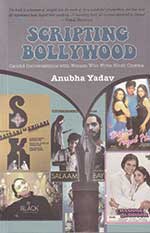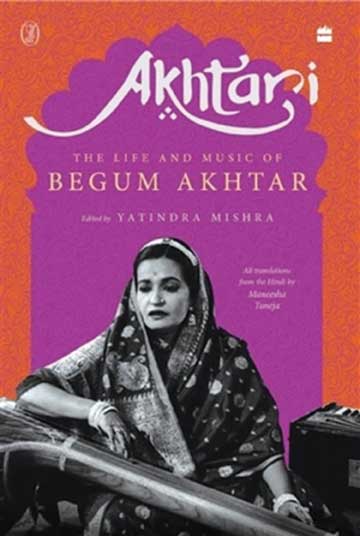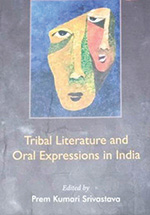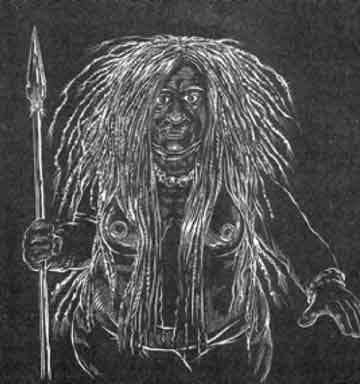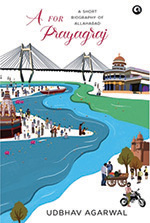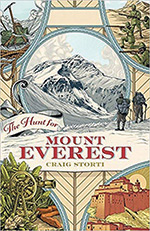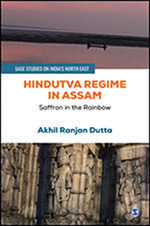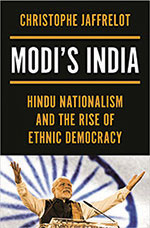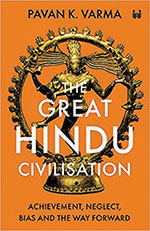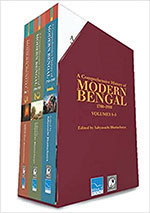Dale Carnegie was an American author and lecturer. He developed several courses on improvement of interpersonal skills. He is well known for his books How to Win Friends and Influence People (1936) and How to Stop Worrying and Start Living (1948). The book in review, Dale Carnegie for Children is an abridged version of his bestselling books, adapted by Ashwitha Jayakumar and divided into four parts.The readers are first introduced to the life and background of Dale Carnegie. This sets the tone for the rest of the book.
Archives
February 2022 . VOLUME 46, NUMBER 2The book under review eloquently encapsulates not only the major achievements of the game but also sheds light on the stalwarts of Indian cricket, their achievements, approaches and vision. In order to carve out the chronology of events, the book has been divided into various sub-sections by the editor on the basis of several epochs of Indian cricket. This has certainly contributed to making it more reader-friendly. Importantly, it has underlined how cricket has become an integral part of Indian social life. Through its ability to capture the imagination of the people, it has succeeded in becoming a game for the masses. The role of the media—print and electronic, has greatly contributed towards this. Additionally, the book brings together memories and conversations of cricket enthusiasts and interviews of eminent Indian cricketers which provide deeper insights on the game. Its discussion of domestic as well as women’s cricket is equally enthralling.
2021
Yogesh Patel’s The Rapids is a collection of brisk poetic thoughts on a range of ideas that reflect on contemporary times. In the age of high-speed internet, data-deluge and fractured communication, Patel is conscious of his stance as a poet. Thus, instead of critiquing the world from an ivory tower, he comes down and invents playful patterns, inspired by everyday disjuncture.
2021
Despite all pronouncements to the contrary, poetry is not dead. But it surely is confronted with a crisis. Its publication and reception are fraught with a risk—a risk that in part springs from the prosaic proclivities of the present and in part from the indifference that noise-saturated sensibility—enamoured as it is by the surfaces—has for anything that demands nuanced engagement with and understanding of life verities.
The task of a poetry editor is both exciting and onerous. The most difficult genre to ‘judge’ for quality, poetry’s intimate and earnest vocabulary defies any fixed norms. While each poet is supremely individual, so is each reader, and therefore literary responses can be highly subjective. Nevertheless, if the incremental interest in this genre is to be systematized for public circulation, editors have to make choices within the amplitude confronting them. Sukrita Paul Kumar and Vinita Agrawal, editors of the Yearbook of Indian Poetry in English, 2020-2021 have fulfilled their task admirably though it is a specially difficult year when the pandemic has thrown up poetry as a favoured instrument of self-healing.
Anton Chekhov, analysing the structural elements of a short story, says, ‘writing a short story, therefore, is to write what the characters do, not what they think, or say’ (Friedland 1890). While there is no autobiographical evidence of Chekhov’s influence on Mannu Bhandari’s artistic development, one can see a Chekovian resonance, a kind of literary parallel. In Vidya Pradhan’s rich selection of eighteen stories under review, Bhandari’s characters do negotiate things as they exist. Her narrative canvas substitutes abstract philosophizing with lived realities.
T.Janakiraman (1921–82), affectionately known as Thi Jaa, is one of the most influential figures of twentieth-century Tamil literature. He wrote about familial and interpersonal issues, with a focus on the ill-treatment of women, especially widows. His best-known novels, Mohamul, 1964, (The Thorn of Desire), Amma Vantal,1966, (English translation The Sins of Appu’s Mother) and Marappasu,1975, (Wooden Cow) present strong women with a mind of their own. Bilingual novelist, short story writer, poet and translator Lakshmi Kannan had published an English translation of Marappasu in 1979. She felt the need to do a revised version; the birth centenary of the novelist provided the occasion to publish it.
I belong to a generation that grew up reading Nayantara Sahgal. Her early works, like her autobiography Prison and Chocolate Cake, captured for us a time that many of us had not personally experienced but could vividly imagine through her writings.Even as India grew older, we aged and the idealism of youth began to lose some of its sheen, Nayantara Sahgal’s was a voice that never failed to make you pause and think.
2021
The canonical Hindi poet Mahadevi Varma (1907-1987) has to some extent suffered from being too revered. In well-meaning hagiography, she has been cast as overly pious, almost joyless in her asceticism for her art. In this context, Ruth Vanita’s attentive translation of Varma’s collection of sketches, My Family, has revitalized Varma as more spiritually buoyant, as someone deeply invested and in love with wider, larger, more spiralling notions of family and kinship—especially one that includes animal companions.
The number of celebrated poets and novelists who began their career reviewing books is probably much higher than is currently known. To start with, current literary culture, while being sustained invisibly by reviewing, is rather uncharitable towards the modest review. Writers too have colluded with this ethos and have tended to distance themselves from their own ‘jobbing work’ once they have achieved name and fame. Dr. Johnson of the eighteenth century was probably the last known writer of English literature who was as much of a ‘grandly generalizing sage’ as he was a ‘proletarianized hack’ (Terry Eagleton, The Function of Criticism, p. 32.)
2020
Afterlives is the latest publication from Abdulrazak Gurnah, the Nobel Prize winner for literature in 2021. The Nobel Committee has very aptly remarked that Gurnah is being awarded for his uncompromising and compassionate penetration of the effects of colonialism and the fate of the refugee in the gulf between cultures and continents (The New York Times).
A book awarded the Saraswati Samman, Ramakathaiyum Iramayanankalum (2005) is an ambitious work by the Thamizh scholar AA Manavalan, a comparative study of forty-eight Ramakathas (though it references more) from the 5th century BCE to the 19th century CE, written in twenty-two languages—Pali, Sanskrit, Prakrit, Tibetan, Tamil, Old Javanese, Japanese, Telugu, Assamese, Malayalam, Bengali, Kannada, Marathi, Hindi, Odia, Persian, Malay, Burmese, Filipino, Thai, Laotian and Kashmiri. We are fortunate now to have a meticulously done translation in English by CT Indra and Prema Jagannathan, one that is extremely readable without losing out on the scholarship and the research that has gone into both the Thamizh work and the translation.
The title of this well-researched book, reflecting a life-time’s work, is serendipitous. Mirrored in it is a couplet written by this medieval poet, which also figures as the epigraph:I have made my mind as pure as Ganga water,Hari follows after, calling out, ‘Kabir, Kabir’The echoing repetition of Kabir’s name, even more than the plurality which is a quintessential aspect of the cultural memory of this poet, suggests the indefinite and nebulous in the striving for the mystical. In an inversion of hierarchy, it is Hari who runs after Kabir, calling out to his devotee.
In a country like ours, where actors, read heroes and heroines, take centre stage over everything else in popular Hindustani cinema, are more important than even the directors, one wonders how important scripts are, and hence scriptwriters. To begin with a confession, I thought more about it once this book hit the market.The Indian screenwriter Anjum Rajabali (known for scripting Drohkaal, Ghulam, Rajneeti and Arakshan to name a few) has penned the Foreword to this book where he starts by quoting Alfred Hitchcock: ‘To make a great film, you need three things—the script, the script and the script.’
At the outset, let me admit I enjoyed reading the book: it makes for a pleasant change from the weakly researched but pretentious High-Church-academic treatises on music it has been my lot to review recently. Much of its content conveys the impression of being honestly felt, which makes even its many shortcomings relatable. That said, it is not an easy book to categorize.
The edited volume makes a significant intervention in the hitherto extant discourse on tribal/Adivasi literary studies in India. As Prem Kumari Srivastava states in her introduction, ‘this book debates and discusses tribal literatures and oral expressions that have long been surrounded by silences, even though they embrace us all the time’ (p. xiii). The contributors to the book make it a point to unfold these silences, probing the narratives of pain, deprivation and dispossession that lie therein. Srivastava highlights the theme and tenor of the book in the introduction asserting that the tribal writings symbolize a revolutionary spirit against the established culture.
As the title suggests, this work is a popular encyclopaedia, which attempts to compile narratives on ghosts, demons, and monsters from the Indian subcontinent. Edited by J Furcifer Bhairav and Rakesh Khanna, this book excavates the ‘spooky’ stories of mythical, tribal and contemporary origins. It constitutes 332 entries with multiple sub-entries, and its lucid writing style is supported by detailed illustrations, inviting a wide range of readership. A significant contribution of this work lies in tracing the micro and macro tales from Assam to the Konkan coast, Kashmir to Odisha, and Tibet to Lakshadweep.
Allahabad has had its share of books. From literary anthologies to histories to the fascination with the Kumbh Mela, this city, where the rivers meet has attracted the attention of insiders as well as outsiders. Huien Tsang, the Chinese chronicler, writes that he visited Prayaga now officially called Prayagraj in 643 AD, during Harshvardhana’s reign.
Craig Storti’s ambitious book is a unique addition to the sagging shelves of literature on the world’s most famous mountain. Where most Everest books begin with the exploratory expedition to the peak in 1921, Storti’s story spans the seven or so decades before that pioneering venture.Mountaineering lore holds that Radhanath Sickdhar (sic), a ‘computor’—as number-crunchers were known in those days—working for the Great Trigonometrical Survey of India, burst into the room of his boss one day in 1852 exclaiming: ‘Sir, I have discovered the highest mountain in the world.’ What was visible from Darjeeling as a mere smudge on the mountainous horizon was now ‘the third Pole’.
The 2014 elections witnessed an unprecedented performance by the BJP in Assam. This was further followed in the Assembly elections of 2016 which saw the Party come to power in the State for the first time. Similar electoral victories were registered in the Parliamentary elections of 2019 and the Assembly elections of 2021. Akhil Ranjan Dutta in Hindutva Regime in Assam puts forth an elaborate account of this rise of the BJP in the State.
Modi’s India: Hindu Nationalism and the Rise of Ethnic Democracy is a meticulously documented book. It tries to unpack India’s journey from populism to ethnic democracy and authoritarianism. It is divided into three parts.In the first part, Jaffrelot starts by explaining the rise of Hindu nationalism. He studies the rise of Modi in Gujarat and how he went from the RSS to the BJP in the 1990s, where he rose above the organization, subjugated it, and to some extent liberated himself from it. He gradually became a national-populist hero, cleverly turning the stigma of the Gujarat riots to his advantage by using his charisma and a well-orchestrated public relations campaign run by pro- fessionals to build his superhuman image.
The story of Indian civilization has been recounted and debated over considerably in India and beyond. For this, scholars have used the term Indus Valley Civilization or the Harappan Civilization, after Harappa, the first excavated site. Almost all research works on Ancient India recognize the Indus Valley Civilization as one of the three greatest civilizations alongside Egypt and Mesopotamia. To John Marshall who supervised its excavations, it was ‘in some respects even superior to Mesopotamia and Egypt’.1
A Comprehensive History of Modern Bengal: 1700-1950 edited by the late Sabyasachi Bhattacharya, an institution in his own right, covers a formidable range of themes. The articles contained in these volumes deal with a diverse array of issues. They deal with, among others, ecology, economy, science, military history, environment, politics, society, social movements, labour, class formation, culture in its multidimensional forms encompassing literature, theatre and art, though an article on the evolution of cinema in Modern Bengal is strangely absent.
Our understanding of climate change has not advanced after the recent climate negotiations, the CoP26, November 2021 in Glasgow. Climate change, being the most complex and lasting of the series of environmental challenges that humanity and the planet have faced over the past two and half centuries, has no easy solution.

